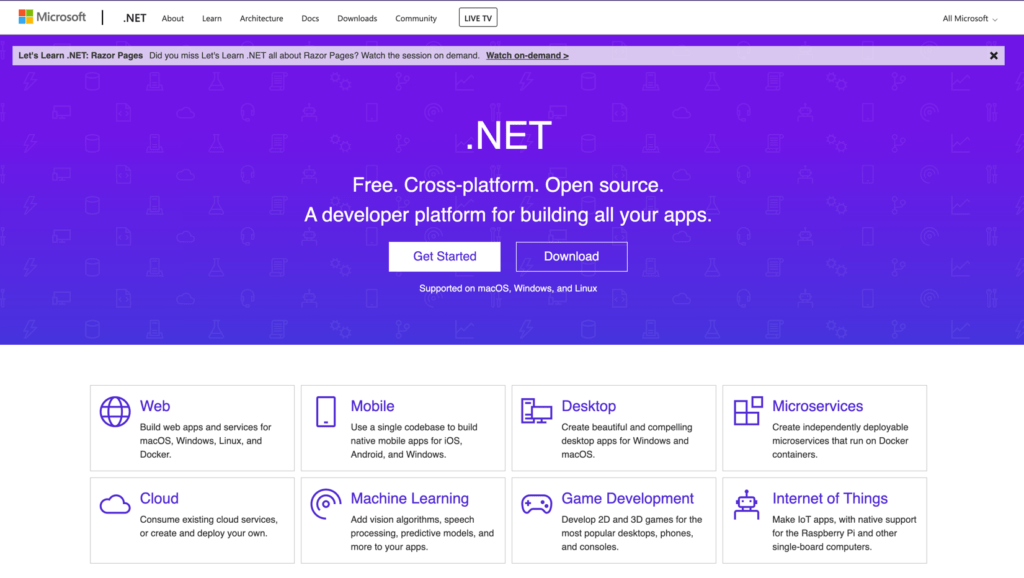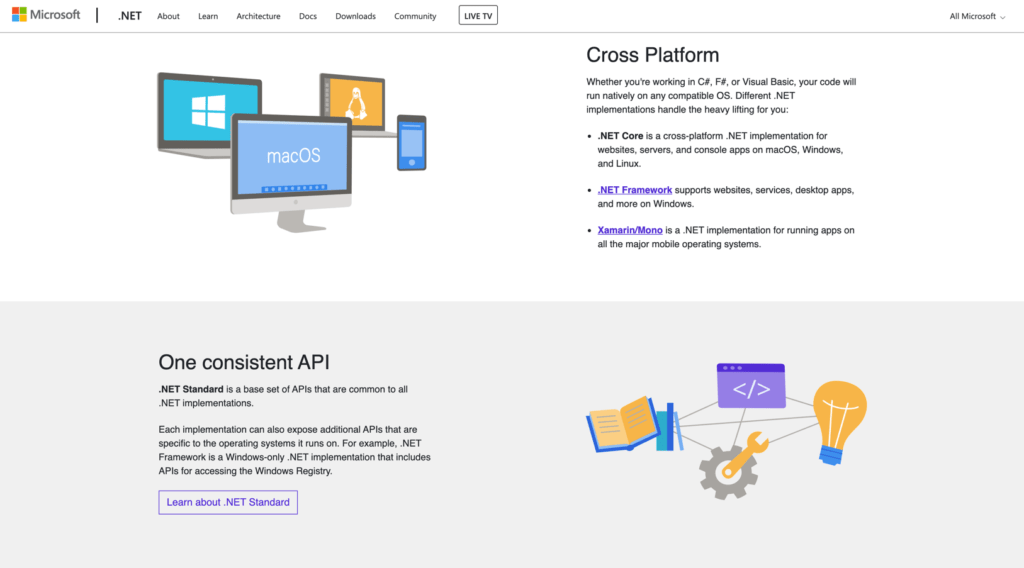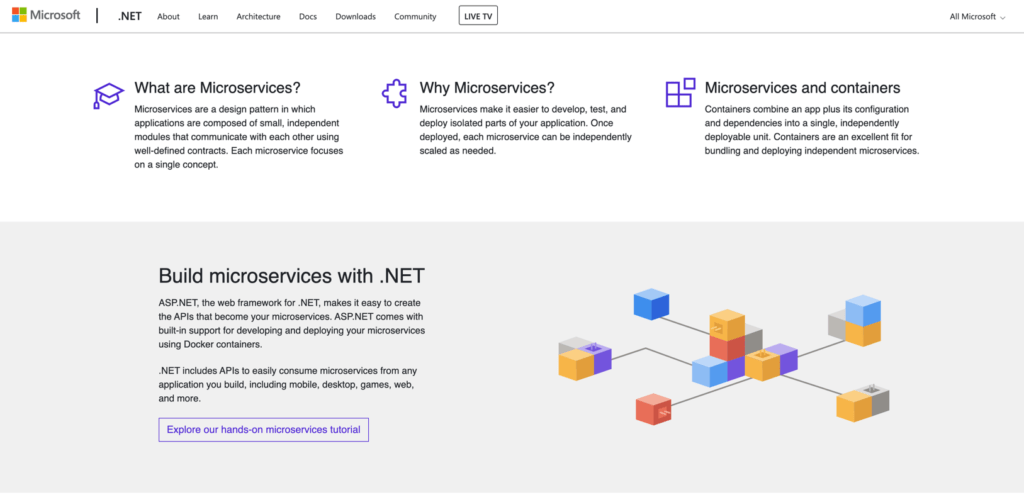Table of Contents
The .NET framework is a powerful, adaptable software framework developed by Microsoft which we use in Kambu for building, deploying, and running desktop and web applications. Over the years, we created, tried, and refined many .NET developer interview questions to assess candidates.
In this blog, we’ll share some (not all!) of these carefully selected .NET developer interview questions and which answers we expect. Additionally, you will learn the reasoning behind the choice.
Article co-written by the back-end team leader, Piotr.
What Does a .NET Developer Do?

A.NET developer designs and programs applications within the .NET framework, which is the capital Windows server solution for both local and cloud.
.NET Developer Tasks
Routine tasks of a .NET developer in Kambu include:
- Writing code using .NET languages
- Testng and deploy applications and systems
- Guaranting peak performance, quality and responsiveness of applications
- Identifying bugs and other issues within applications, and developing solutions to address such problems
- Maintaining code quality over time
Skills (Some Go Beyond .NET Developer Interview Questions)
Being a .NET developer combines creative problem solving, a sharp eye for spotting defects, and technical coding. In Kambu, we usually expect:
- Knowledge of at least one of the .NET languages (C#, F#, Visual Basic)
- Familiarity with the ASP.NET framework, SQL Server and design/architecture patterns
- Experience with architecture styles/APIs (REST)
- Writing tests inxUnit or NUnit
- Practical knowledge of GIT
- Understanding of Agile methodologies
Top .NET Developer Interview Questions Answered
In preparation for your upcoming developer interview, here are common .NET developer interview questions we ask in Kambu that test your knowledge of the framework.
Your good preparation and knowledge of answers will for sure improve your chances of getting a job!
1. What is middleware in ASP.NET Core?
Why this question: With this question, we can easily determine whether the candidate knows how the whole Request Pipeline works in ASP.NET Core. If you know what middleware is and how to create one you can, for example, add something before a request reaches the controller.
Answer: Simply put – middleware is just like a component. ASP.NET Core consists of many middlewares. When the request is sent, one of the ASP.NET Core middlewares takes it, performs operations on it, and passes it to another middleware.
How to excel: Describe in detail the whole request pipeline, provide instructions on how to create custom middleware, and what are the best practices for creating it.
2. What are services lifetime in Dependency Injection? Describe them.
Why this question: It is crucial to understand which lifetime should be used for each service.
Answer: There are three lifetimes:
- Transient – service is created each time it is requested from service container
- Scoped – service is created once per client request (connection)
- Singleton – service is created only once, at the first time it is requested
How to excel: Provide examples for each of the lifetimes and what are the pros and cons of each.
3. What are the differences between Eager Loading and Lazy Loading in EF Core?
Why this question: Depending on the size of the application, it is very important to choose a strategy for loading entities. By default, EF Core uses Lazy Loading, and its default behavior brings a lot of confusion to many people starting to use EF Core.
Answer: Eager Loading is a strategy where EF Core loads only data for the Primary object, and only if you tell EF Core (by using the Include method) to load related entities (by the navigation property) the data is loaded into memory.
Lazy Loading, on the other hand, is a strategy where EF Core loads data for the primary object plus related data in scalar and navigation properties for you. You don’t have to provide Includes. It’s lazy because you don’t have to worry about loading related entities.
How to excel: Bring up situations, in detail, where each is more appropriate.

4. What are the async/await keywords and what they do?
Why this question: Asynchronous programming is a very common thing. It is very important to understand what are the async/await keywords, what they do, and what are the best practices for asynchronous programming.
Answer: Async keyword is used to mark a method that is going to perform asynchronous operations. This kind of method has a generic return type of Task<>. To make the method really asynchronous, it requires to await calls inside of it, so it is going to perform operations asynchronously.
How to excel: List best practices for async/await methods. Describing synchronization context is a big plus.
5. How and when create HttpClient objects for ASP.NET Core application?
Why this question: It is very important to understand why creating multiple objects of HttpClient by ourselves is a bad idea.
We should create as little as possible due to socket exhaustion which is a common problem in applications that are making many API calls by HttpClient. This is one of the crucial .NET developer interview questions.
Answer: We should not create HttpClient objects by ourselves (or maybe static ones).
The best practice recommended by Microsoft is to use HttpClientFactory, which takes care of instantiating HttpClient objects and managing them in a smart way.
How to excel: Tell us possible ways of using HttpClientFactory and briefly talk about resilience.
6. What is resilience and how to achieve it for HttpClients?
Why this question: Resilience is a very important case for web applications. If we are getting data from an external application, we want to make sure that we have done everything that is possible to obtain the data.
Answer: Resilience enables applications to react to a failure and still remain functional.
We can simply achieve resilience for HttpClient by applying resiliency policies with the Polly library.
How to excel: Detail one of the common policies (for example: wait and retry, circuit breaker, and many more).

7. What is CI/CD and how does this help maintain application?
Why this question: Continuous Integration and Continuous Deployment are very common topics in terms of maintenance of the applications. It helps developers every day to quickly build and deploy applications. In case there is a bug and a hotfix is needed, CI and CD can speed up the whole process.
Answer: CI stands for Continuous Integration and simply is a way of collecting code into the centralized repository and building the application.
CD stands for Continuous Deployment and is a way of using previously built applications (in the CI stage) and deploying them automatically to one of the application environments.
How to excel: Touch on examples of real-life cases so you show familiarity with CI and CD.
8. How to build and host the .NET Core application on Linux?
Why this question: It is very important to understand how to build and host .NET Core applications, as this is the output of every developer’s work.
This question requires knowledge from a developer scoped not only on how to build the .NET application but how it is possible to host it on Linux. .NET Core applications can be hosted almost everywhere. That’s why the Linux part is a little bit tricky over here.
Answer: Simply by preparing docker images (using Dockerfile), we can build the application and create docker images. The docker image can be pushed later on into any docker registry and then used on any machine that has Docker Engine installed. This is one of the many ways on how to build and host applications.
The most important part is that the application which is going to be deployed to Linux requires to use Kestrel instead of IIS.
How to excel: Demonstrating you know your way around Linux.
Conclusion: Having a Great .NET Developer Job Interview

As we all know, .NET is very vast and it is not possible to cover all topics in one text.
But we showed the most important aspects discussed during an interview. It is a base, but of course, you should expect more questions considering the .NET framework.
Remember that it is not all about your technical skills. Your success during the interview will also depend on your state of mind and if you are able to make a good impression.
Besides technical questions, we always ask some questions about your soft skills, motivation, and expectations. We want to know about you.
We hope this text helps you in your future interviews. Good luck!
Don’t forget to check our careers page for IT jobs listings. We might have an opening for a .NET developer!




